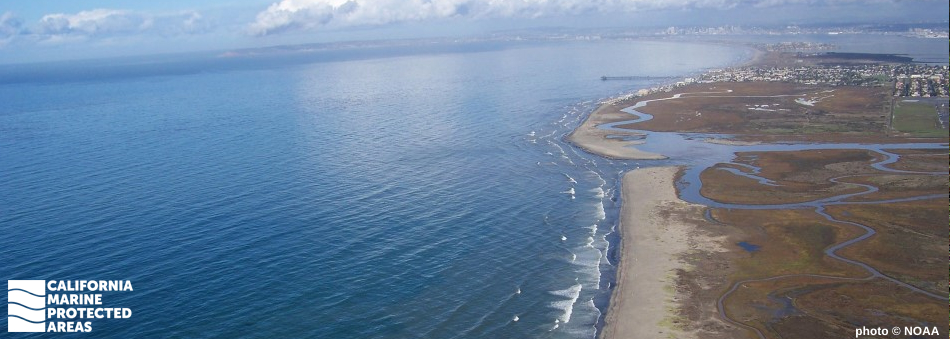
Overview
Tijuana River Mouth State Marine Conservation Area (SMCA), California’s southernmost marine protected area (MPA), protects around three square miles of habitat beginning at the United States/Mexico border and extending north towards Imperial Beach in southern San Diego County. The SMCA protects varied ecosystems, including sandy beaches, tidal flats, coastal marsh, surfgrass and kelp beds, sandy seafloor, and the largest offshore cobble reef in the south coast region.
This MPA sits adjacent to the Tijuana River National Estuarine Research Reserve. The combination of onshore/offshore protection helps to maintain the connection between the estuary and marine environments, keeping this large Southern California ocean-estuary complex intact. Tijuana River Mouth SMCA is a popular location for birdwatching as it is frequented by more than 370 species of birds, including marbled godwits, sanderlings, western sandpipers, double-crested cormorants, California brown pelicans, and a variety of gulls and terns. California halibut use the adjacent estuary as a nursery; young halibut move offshore into the open-ocean SMCA eventually. Gray smoothhound sharks move between the MPA and estuary looking for meals like small fish, ghost shrimp, and innkeeper worms.
Regulations
It is unlawful to injure, damage, take, or possess any living, geological, or cultural marine resource, EXCEPT:
Recreational take of coastal pelagic species except market squid (northern anchovy, Pacific sardine, Pacific mackerel, and jack mackerel), by hand-held dipnet only is allowed. Commercial take of coastal pelagic species except market squid, by round-haul net is allowed. Not more than five percent by weight of any commercial coastal pelagic species catch landed or possessed shall be other incidentally taken species, including market squid.
California Code of Regulations Title 14, Section 632(b)(147)(opens in new tab)
Quick Facts
MPA size: 3.02 square miles
Shoreline span: 2.2 miles
Depth range: 0 to 55 feet
Habitat composition*:
- Sand: 2.89 square miles
- Rock: 0.08 square miles
*Habitat calculations are based on three-dimensional area and may exceed the total MPA area listed above.